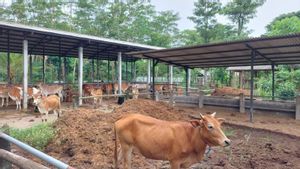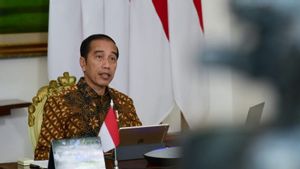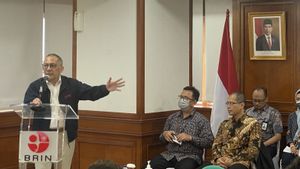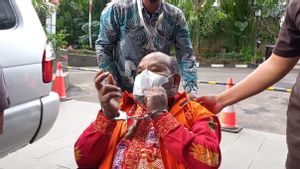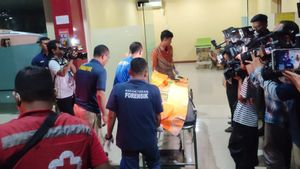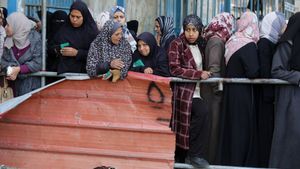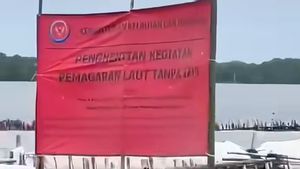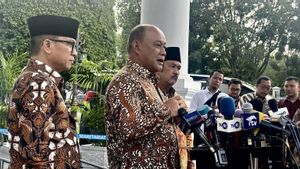TRENGGALEK - The Animal Husbandry Service of Trenggalek Regency, East Java, is trying to maintain the local species "Galekan" cattle population even though it is not considered a superior type and its numbers continue to decline.
"Currently, there are only 33 Galekan cattle left. We want this population to be maintained, even increased," said the Head of Production Development and Livestock Business at the Trenggalek District Animal Husbandry Service, Yoyon Hariyanto, as reported by ANTARA, Friday, February 10.
The continued decline in the Galekan cattle population cannot be separated from the quality of the livestock compared to other types of cattle, which usually have a heavier weight and have a higher selling price on the market.
Unlike the other types, Galekan cattle tend to be smaller in size and have a much lower selling price. As a result, the interest of breeders to maintain or breed Galekan cattle is also low.
In Indonesia, there are 13 strains of cattle, one of which is the Galekan cattle. Galekan cattle lines are determined based on the Decree of the Minister of Agriculture Number 617/KPTS/PK.020/M/09/2020 concerning the Determination of Galekan Cattle Clusters," he said.
The existence of 33 Galekan cattles is only in the Technical Implementation Unit for Galekan cattle breeding belonging to the Trenggalek Agriculture Service.
In the community or in breeders, the population is thought to have disappeared.
Conservation efforts are now trying to be intensified by the local government through the animal husbandry service because the local cattle population continues to decline drastically. This condition is inversely proportional to the population of Galekan cattle in previous times.
"The population has dropped dramatically and since 2014 the animal husbandry service has focused on saving it from the threat of extinction. Initially, there were around 5-6 of them that we bought from the community and now they have grown to 33," he said.
According to Yoyon, there are many factors causing the population of cattle resulting from cross-breeding between Bos javanicus and Bos Indicus in Trenggalek, which were bred naturally and kept by the community for generations, to decline and are rarely found in the community.
Starting from the low selling price to the weight of the cattle which is less when compared to cattle that are generally raised by the community.
"Because of the reluctance of the community to raise cattle. In terms of posture, they are smaller and shorter than exotic cattle from abroad such as limousines and simental, so people switch to these cattles. Apart from that, the selling price is also affected. For males, the weight of Galekan cattle is usually between 350-400 kilograms, females around 300 kilograms, while a limousine can be up to a ton more," he said.
SEE ALSO:
Yoyon said that cattles, whose distribution used to be mostly found in the southern coastal area and the Trenggalek mountain area, had good adaptability to the environment. Apart from that, the Galekan cattle is also said to be easy to breed, so that is one of the advantages of the Galekan cattle.
“Because it has gone through a long process of adaptation because it has been in Trenggalek for hundreds, centuries. Easy to adapt related to food, easier to get pregnant actually. Then because the food is pure (natural) so it is healthier," he said.
When the Ministry of Agriculture designated Trenggalek native cattle, the number of cattles that had a characteristic black stripe along their back and a reddish-white to brown color was 71 with details of 20 adult males, 41 adult females, and 10 young cattle.
However, gradually the cattle population declined until conservation efforts were made. Because Galekan is one of Trenggalek's natural resources, so it must continue to be preserved.
The English, Chinese, Japanese, Arabic, and French versions are automatically generated by the AI. So there may still be inaccuracies in translating, please always see Indonesian as our main language. (system supported by DigitalSiber.id)



